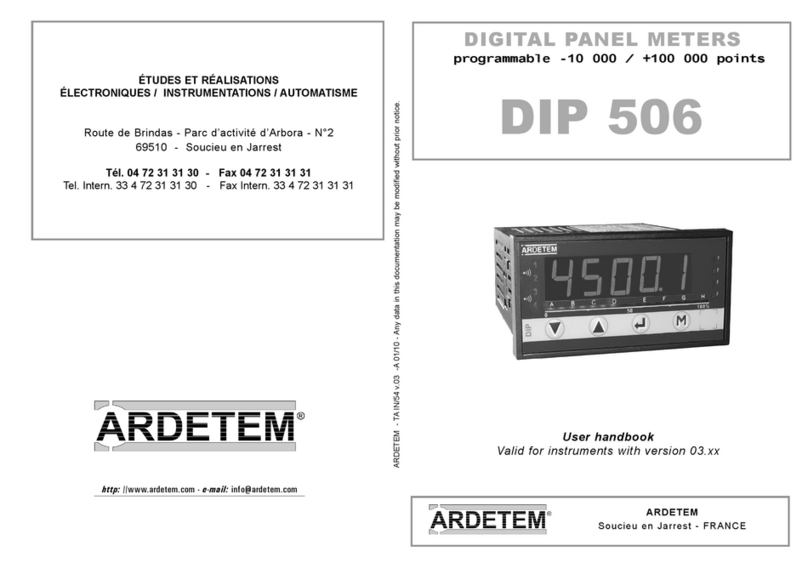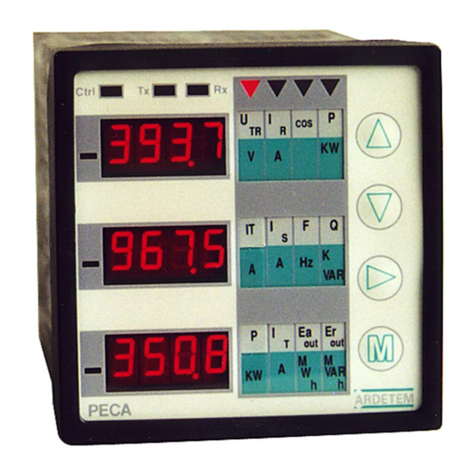
p1
Summary
1 . INTRODUCTION p2
2 . SPACE REQUIREMENTS p3
3 . WIRING p4
4 . PROGRAMMING p5
4.1 Communication with the instrument p5
4.2 Orientation through the programming p5
4.3 Main menu p5
4.4 Programming menu p6
4.4.1 - Programming of the input p6
4.4.2 - Programming of the display p7
4.4.3 - Programming of the analog output p8
4.4.4 - Programming of the digital output p8
4.4.5 - Programming of the relay outputs p9
4.4.6 - Programming of mode safety p9
4.4.7 - Programming of the brightness, of the p10
bargraph and displays
4.4.8 - Exit from programming with or without p10
saving
4.5 Input features and programming limits p10
4.5.1 - Choice of the network p10
4.5.2 - Automatic or manual caliber p10
4.5.3 - Choice of the current caliber p10
4.5.4 - Choice of the voltage caliber p11
4.5.5 - Choice of the CT ratio p11
4.5.6 - Choice of the VT ratio p11
4.5.7 - Choice of the operating mode p11
4.5.8 - Programming of the cosine p12
4.6 Output features and programming limits p12
4.6.1 - Analog output p12
4.6.2 - Digital output p13
4.6.3 - Relay outputs p13
4.6.4 - Safeties p14
4.6.5 - Display features p15
4.7 Reading of the configuration p15
4.8 Access code p15
4.9 Programming of a new access code p16
4.10 Functions accessible in the main menu p16
4.10.1 - Simulation of the display p16
4.10.2 - Simulation of the analog output p16
4.10.3 - Menu CLEAr :
Deleting of recorded alarms p16
4.10.4 - Menu CLr.E :
zero reset of the energies p16
5 . FUNCTIONS DIRECT FROM DISPLAY p17
5.1 Functions accessible simply by pressing 1 key p17
a / Display of the minimum value p17
b / Display of the maximum value p17
c / Switching of display p17
c / Deleting of the min. and max. values p17
5.2 Functions which require pressing several keys p17
5.2.1 - Automatic setting of the cut-off p17
5.2.2 - Visualisation of the measure unit p17
5.2.3 - Display of the lower part of an energy p18
counter
5.2.4 - Visualisation and setting of alarm setpoints p18
5.2.5 - Modification of the display resolution p18
6 . ERROR MESSAGES p18
7 . GENERAL WARRANTY TERMS p18
8 . LEXIQUE p18
9 . ANNEXE : MODBUS p21
9.1 Table of the measure modbus addresses p22
9.2 Table of the units and decimal points of the measures p22
9.3 Description of born modbus functions p23
9.4 Reading in double integer format p23
9.5 CRC 16 calculation algorythm p24






























